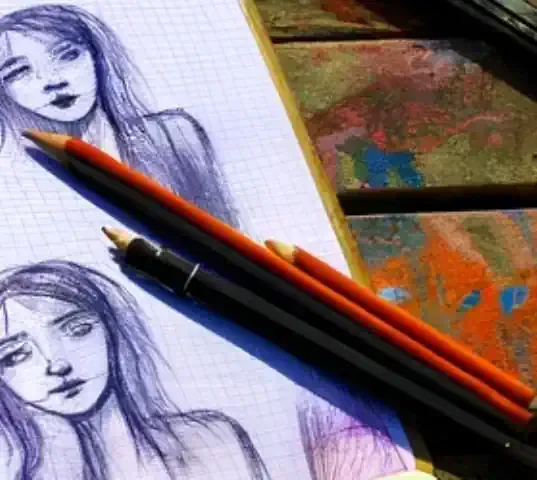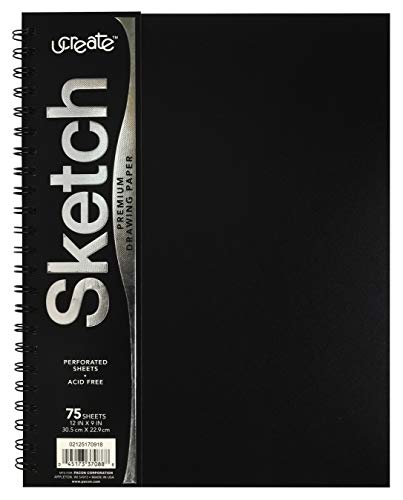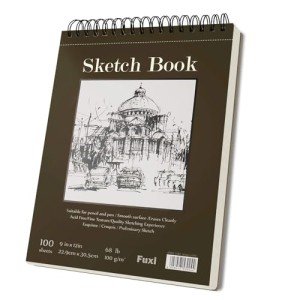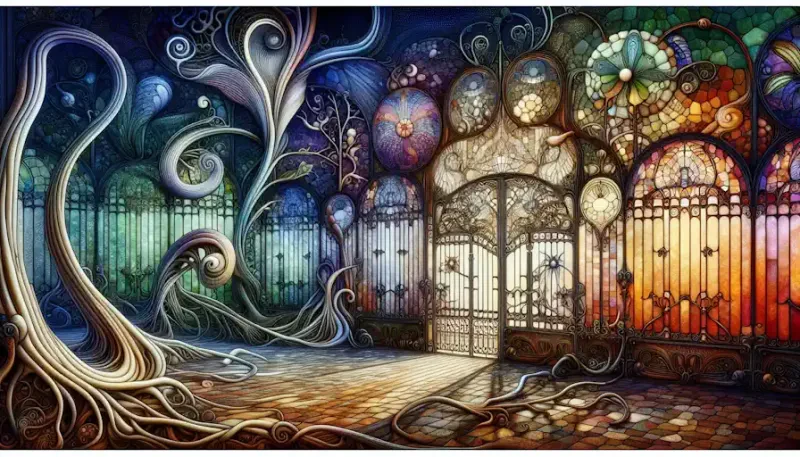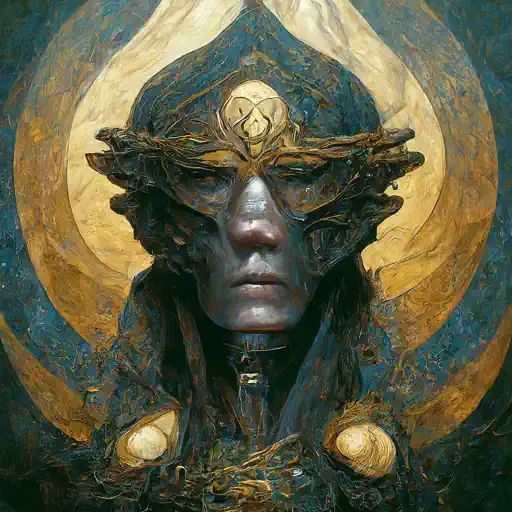What is Sketching?
Sketching is the art of creating a quick, preliminary drawing that captures the essence of a subject. It's a fundamental skill used by artists of all disciplines, from animators and illustrators to fashion designers and architects. Unlike a finished artwork, a sketch is not meant to be a meticulously detailed representation. It's a way to explore ideas, experiment with compositions, and capture fleeting moments.
Sketches can be simple or complex, depending on the artist's intent. A quick gesture drawing might use a few loose lines to capture the movement of a figure in action. A more detailed sketch might involve shading and value studies to define form and depth. Regardless of the complexity, a successful sketch conveys the artist's observation and captures the essence of the subject.
Benefits of Sketching
Sketching offers a wealth of benefits for both aspiring and experienced artists. Here are a few key advantages:
Improves Observational Skills: Through the act of sketching, artists train their eyes to see more than just the basic outline of an object. They learn to observe subtle details like proportions, negative space, and the interplay of light and shadow. This heightened awareness translates into more accurate and compelling representations in all their artwork.
Develops Hand-Eye Coordination: Sketching requires a constant dialogue between the hand and the eye. As artists move their drawing tool across the surface, they must visualize the line they want to create. This practice builds dexterity and improves hand-eye coordination, leading to smoother and more controlled lines.
Enhances Creativity: Sketching is a fantastic tool for brainstorming ideas and exploring creative possibilities. The freedom and flexibility it offers allow artists to experiment with different compositions, techniques, and visual concepts without the pressure of creating a final piece.
Boosts Confidence: The act of putting pencil to paper and creating something visual can be incredibly empowering. Sketching allows artists to experiment and make mistakes without fear of ruining a final artwork. This can lead to increased confidence and a willingness to take artistic risks in other areas.
Promotes Relaxation and Mindfulness: Sketching can be a wonderful form of relaxation and stress relief. It allows artists to focus on the present moment, tune out distractions, and become engrossed in the act of creation. This meditative quality can be a welcome escape from the demands of daily life.
Essential Tools: Pencils, Pens, and Paper
While sketching can be done with various media, three essential tools form the foundation: pencils, pens, and paper. Each plays a crucial role in the sketching process.
Pencils: Offer versatility and control, allowing artists to create light, easily erasable lines for initial planning and detailed shading.
Pens: Introduce the element of permanence, encouraging focused linework and a bolder approach to sketching.
Paper: Provides the surface for capturing your artistic vision. Different paper weights, textures, and tooth cater to various sketching styles and media choices.
These fundamental tools, along with a bit of practice and creative exploration, can unlock the world of sketching and help you develop your artistic skills
Demystifying Pencils
Pencils, with their familiar graphite core encased in wood, are a cornerstone of any sketcher's toolkit. Their versatility and ease of use make them ideal for everything from laying down light foundation lines to creating detailed, shaded studies. But with a vast array of pencil grades, lead thicknesses, and types available, navigating the world of pencils can feel overwhelming. This section will equip you with the knowledge to choose the perfect pencil for your sketching needs.
Graphite Grades
The core of a pencil is composed of graphite, a naturally occurring mineral, mixed with clay. The ratio of graphite to clay determines the hardness or softness of the pencil, which is indicated by a letter-and-number grading system. Understanding these grades is essential for achieving the desired effects in your sketches.
H Pencils (Hard): Marked with the letter "H" followed by a number (2H, 3H, etc.), hard pencils contain a higher proportion of clay to graphite. This results in a lighter stroke that leaves a faint mark on the paper. H pencils are ideal for creating clean, precise lines and are often used for technical drawings or light sketching where you want to minimize smudging. As the number following "H" increases, the pencil becomes progressively harder and lighter.
B Pencils (Soft): Represented by the letter "B" with a corresponding number (2B, 3B, etc.), soft pencils have a higher concentration of graphite and less clay. This makes them ideal for creating darker, more expressive lines and for shading and blending techniques. The higher the number following "B," the softer the pencil and the darker the mark it leaves.
HB Pencils (Medium): Falling in the middle of the spectrum are HB pencils, which contain a balanced ratio of graphite and clay. They offer a good compromise between hardness and softness, making them suitable for a variety of sketching tasks, from initial outlines to basic shading. HB pencils are a great starting point for beginners who are still exploring different techniques.
Lead Thickness
The thickness of the graphite core within a pencil also plays a significant role in your sketching experience. Lead thickness is typically measured in millimeters (mm) and can range from 0.3mm to 0.9mm or higher.
Thin Leads (0.3mm - 0.5mm): These fine leads are perfect for creating delicate lines, intricate details, and precise hatching or cross-hatching patterns. They are often found in mechanical pencils, which offer the advantage of a constant lead point that never needs sharpening. However, thin leads can be prone to breaking, especially when applying heavy pressure.
Thick Leads (0.7mm and above): Thicker leads offer greater flexibility and are ideal for bolder lines, expressive sketching styles, and creating areas of dark value. They are less likely to break than thin leads and can be sharpened to a fine point for detailed work if needed.
The choice of lead thickness depends on your personal preference and sketching style. Experimenting with different lead thicknesses will help you discover what works best for you.
Types of Pencils
Beyond the standard woodcase pencil, there are a few other pencil types worth exploring for sketching:
Mechanical Pencils: Offer convenience and precision with a refillable lead reservoir. They eliminate the need for sharpening and are perfect for creating consistent linework.
Clutch Pencils: Similar to mechanical pencils but offer a wider range of lead thicknesses, allowing for greater versatility in your sketching.
Charcoal Pencils: Provide a velvety black line and are ideal for creating bold, expressive sketches. They can be blended easily for dramatic effects but are impermanent and require fixative to prevent smudging.
By understanding graphite grades, lead thickness, and the different types of pencils available, you can create a curated pencil collection that empowers you to explore a wide range of sketching techniques and express your artistic vision.
Unveiling the World of Pens
While pencils offer a forgiving and versatile sketching experience, pens introduce the element of permanence and a distinct visual style. They can be used for bold linework, detailed illustrations, or creating washes with water-soluble inks. However, unlike pencils, pens require a bit more care and planning due to the permanence of the ink. This section will delve into the different types of pens and guide you towards selecting the perfect tool for your sketching needs.
Ink Types
The type of ink used in a pen significantly impacts the look and feel of your sketch. Here are three common ink types to consider:
Gel Pens: Contain a thick, viscous gel-based ink that produces smooth, opaque lines. Gel pens come in a wide variety of colors and are popular for creating bold lines, lettering, and graphic illustrations. However, gel ink can take longer to dry and may smudge if not handled carefully.
India Ink Pens: Filled with a permanent, water-resistant ink derived from shellac or lampblack. India ink creates sharp, well-defined lines that are ideal for technical drawings and detailed sketches. It can also be diluted with water to create washes for a more painterly effect. However, India ink pens require more cleaning and maintenance to prevent clogging.
Ballpoint Pens: The most common type of pen, utilizing a small ball bearing at the tip that regulates ink flow. Ballpoint pens offer smooth writing and are readily available, but the ink may not be as permanent or lightfast as other options. They are not ideal for detailed sketching but can be used for quick gesture drawings or creating a base for mixed-media artwork.
Pen Nibs
The pen nib, the tip that comes into contact with the paper, plays a crucial role in the line quality and overall sketching experience. Here are a few common pen nib types:
Fine Point Nibs: Produce thin, precise lines and are ideal for detailed drawings, technical illustrations, and intricate hatching or cross-hatching techniques.
Medium Point Nibs: Offer a balance between line width and control, making them suitable for a variety of sketching tasks from outlines to basic shading.
Brush Nibs: Flexible and provide a range of line thicknesses depending on the pressure applied. Brush nibs are perfect for creating expressive lines, washes, and calligraphic lettering.
Fineliners
A subcategory of pens specifically designed for drawing and technical illustration, fineliners feature fine points, permanent inks, and a smooth ink flow. They are available in a variety of tip sizes and colors, making them ideal for detailed sketching, outlining, and creating intricate patterns.
Choosing Pens for Sketching
When selecting a pen for sketching, consider the following factors:
Sketching Style: Do you prefer bold lines and graphic illustrations, or are you aiming for detailed drawings with fine lines and hatching?
Desired Ink Color and Permanence: Do you need a vibrant color palette, or is a simple black and white sketch more suitable? Consider how permanent you need the ink to be.
Waterproof or Non-Waterproof Ink: Will you be using watercolors or other wet media in conjunction with your pen sketches? If so, a waterproof ink is essential.
By understanding the different ink types, pen nibs, and factors to consider when choosing a pen, you can select the perfect tool to elevate your sketching and create captivating artwork.
Exploring the Canvas: Paper Selection
Paper is the foundation upon which your sketch takes shape. It provides the texture, weight, and absorbency that influence the look and feel of your artwork. Choosing the right paper can significantly enhance your sketching experience and allow you to achieve the desired effects. This section will equip you with the knowledge to navigate the world of paper and select the perfect surface for your creative vision.
Paper Weight
Paper weight refers to the thickness and density of the paper, typically measured in grams per square meter (gsm) or pounds per ream (lb). The weight of the paper impacts its durability, texture, and how well it handles different media. Here's a breakdown of common paper weights for sketching:
Lightweight Paper (70-90 gsm): Thin and portable, ideal for quick sketches, gesture drawings, or carrying in a sketchbook. However, it may not hold up well to heavy erasing or wet media.
Medium Weight Paper (110-160 gsm): A versatile option suitable for a variety of sketching techniques. It offers a good balance between weight and tooth, allowing for detailed work while being durable enough for most dry media.
Heavyweight Paper (190 gsm and above): Thick and substantial, perfect for detailed drawings, heavy blending, and wet media applications like watercolor washes. Heavyweight paper is more resistant to warping and buckling, making it ideal for finished pieces.
Paper Texture
The texture of the paper surface, also known as tooth, affects how your drawing tool interacts with the paper and the resulting marks. Here are the main types of paper texture:
Smooth: Offers a slick surface that allows for precise lines and minimal pencil drag. Ideal for technical drawings, pen and ink work, and creating sharp details.
Medium: Provides a good balance between smoothness and tooth, suitable for a variety of sketching techniques from smooth lines to light blending.
Toothy: Has a pronounced surface texture that grabs the pencil lead, creating a more textured and expressive line. Great for charcoal sketching, bold drawing styles, and creating areas of light and shadow.
The choice of paper texture depends on your personal preference and the desired outcome. Experimenting with different textures will help you discover what works best for your sketching style.
Tooth and Surface Texture
While often used interchangeably, tooth and surface texture have distinct characteristics. Tooth refers to the way the paper grabs the graphite or ink, influencing line quality and shading. Surface texture encompasses the overall feel of the paper, including smoothness, bumps, and irregularities. Understanding both aspects allows you to make informed choices about the paper you use.
Sketchbooks vs. Individual Sheets
Paper for sketching comes in two main formats: bound sketchbooks and individual sheets. Each format offers its own advantages:
Sketchbooks: Portable and convenient, allowing you to capture ideas and sketches on the go. They come in various sizes and paper qualities, making them a versatile option for any artist.
Individual Sheets: Provide more flexibility in terms of size and paper weight. You can choose specific papers for different projects and create larger-scale sketches. However, they require a separate carrying case or portfolio for storage.
The choice between sketchbooks and individual sheets depends on your sketching habits and preferences. If portability is a priority, a sketchbook might be the better option. If you prefer more flexibility in size and paper weight, individual sheets might be a better fit.
Popular Sketching Paper Brands
There are many excellent paper brands available for sketching, each with its own unique qualities. Here are a few popular options to consider:
Strathmore: An industry leader, offering a wide range of sketchbooks and individual sheets in various weights and textures.
Moleskine: Known for their classic notebooks and sketchbooks, featuring high-quality paper suitable for a variety of sketching styles.
Canson: A French brand offering a diverse selection of papers, including heavyweight options ideal for wet media and charcoal sketching.
Fabriano: Italian papermakers renowned for their beautiful, textured papers perfect for creating expressive sketches.
Exploring different paper brands and experimenting with their products allows you to discover your favorites and find the perfect surface to bring your artistic vision to life.
Selecting the Right Pencil: Your Artistic Ally
With a basic understanding of pencil types, grades, and lead thicknesses, you're ready to delve into choosing the perfect pencil for your sketching needs. The ideal pencil will not only enhance your technique but also inspire creative exploration. Here's a guide to selecting the right pencil based on your sketching goals and artistic style.
Sketching Style-Pencils
The type of sketch you aim to create significantly influences your pencil choice. Here are some considerations:
Light and Delicate: For sketches emphasizing delicate lines and minimal shading, an HB or H pencil is ideal. These grades offer precise control and minimal smudging, perfect for capturing light details and capturing fleeting moments.
Bold and Dark: If your style leans towards bold lines, dramatic shading, and expressive drawing, consider softer pencils like 2B or 4B. These grades allow for richer blacks, smoother blending, and a more dynamic visual language.
Level of Detail
The level of detail you plan for your sketch also plays a role in pencil selection.
Highly Detailed Sketches: For intricate drawings with fine lines and subtle shading, opt for a hard pencil (H or 2H) and a thin lead (0.3mm - 0.5mm). This combination provides precise control for detailed work.
Less Detailed Sketches: For looser sketches focusing on capturing form and composition, a medium-soft pencil (HB or 2B) with a thicker lead (0.7mm and above) offers flexibility and allows for broader strokes.
Layering and Blending Techniques
If your sketch involves layering and blending techniques to create depth and tonal variations, consider the following:
Layering: Start with a light H or HB pencil for initial outlines. Gradually build up layers with softer pencils (2B and above) to create darker values without smudging the initial lines.
Blending: Softer pencils (4B and above) with thicker leads are ideal for blending techniques like hatching and cross-hatching. They create smooth transitions between tones and allow for expressive shading effects.
Erasing Needs
The amount of erasing you anticipate will also influence your pencil selection.
Frequent Erasing: For sketches with many corrections or light pencil lines, an H or 2H pencil is a good choice. These grades erase cleanly and minimize paper damage.
Minimal Erasing: If you prefer minimal erasing and a more expressive approach, a softer pencil (2B or above) can be used. However, be aware that softer grades erase less cleanly and may leave faint marks.
By considering these factors, you can choose the perfect pencil to complement your sketching style and artistic vision. Remember, there's no single "right" answer. Experimenting with different pencil grades and lead thicknesses is an essential part of the learning process and can lead to unexpected discoveries in your creative journey.
Choosing the Right Pen: Unleashing Your Lines
Unlike pencils, pens offer a permanent mark, encouraging a more deliberate and expressive approach to sketching. Selecting the right pen hinges on your desired outcome and sketching style. This section will equip you with the knowledge to choose the perfect pen for capturing your artistic vision.
Sketching Style-Pens
The type of pen you choose depends heavily on the visual language you want to create:
Linework: For sketches emphasizing clean lines and graphic details, fine point pens with permanent, waterproof inks are ideal. Fineliners and technical pens offer precise control and a consistent line weight, perfect for architectural drawings, detailed illustrations, or capturing fleeting gestures.
Wash: If your style leans towards washes and tonal variations, consider water-soluble inks and brush nib pens. These allow for creating washes with diluted ink, adding a painterly effect to your sketches. Experiment with different water dilution ratios to achieve your desired level of transparency and texture.
Detail: For detailed sketches requiring intricate lines and hatching techniques, fine point pens with permanent inks offer the control and precision needed. However, consider the trade-off between line width and flexibility - very fine point pens can be unforgiving for detailed work.
Desired Ink Color and Permanence
The ink color and permanence significantly impact the look and feel of your sketch:
Black and White: For a classic, timeless look, black ink pens are a versatile choice. They work well for a variety of sketching styles and can be combined with other media like watercolors or colored pencils for added depth.
Vibrant Colors: If you crave a splash of color, explore pens with pigmented inks available in a wide range of hues. These are perfect for creating bold, graphic illustrations or adding pops of color to your sketches.
Permanence: Consider how permanent you need the ink to be. For sketches you plan to keep or use as reference, permanent inks are crucial. If you anticipate making many corrections or using the sketch as a stepping stone for a digital artwork, a non-permanent ink might be more suitable.
Waterproof or Non-Waterproof Ink
The waterproof nature of the ink determines its versatility:
Waterproof Inks: Ideal if you plan to use watercolors or other wet media techniques in conjunction with your pen sketches. They won't bleed or smudge, allowing you to create layered effects.
Non-Waterproof Inks: May be suitable for dry media sketches or if you prefer a softer, more painterly look. However, they may bleed if exposed to water, so be mindful of your technique.
Pen Nib Flexibility (Optional)
Pen nib flexibility can influence the line quality and expressiveness of your sketch (consider including this section only if the target audience is likely to be familiar with different pen nibs):
Rigid Nibs: Offer consistent line width and control, ideal for precise technical drawings or clean linework.
Flexible Nibs: Like brush nibs, allow for variation in line thickness depending on pressure applied. These are perfect for creating expressive lines, calligraphic lettering, and adding a sense of movement to your sketches.
By understanding the impact of sketching style, desired ink properties, and pen nib flexibility (if applicable), you can choose the perfect pen to unlock your artistic expression and elevate your sketching experience. Remember, experimentation is key! Don't be afraid to try different pen types and inks to discover what resonates with your creative vision.
Selecting Paper for Your Sketch: Finding the Perfect Canvas
Paper, the foundation for your sketch, plays a crucial role in how your artwork takes shape. The weight, texture, and absorbency of the paper significantly impact the feel and final look of your creation. Choosing the right paper empowers you to achieve your desired effects and elevate your sketching experience. This section will guide you through selecting the perfect paper for your sketch, considering various factors.
Dry vs. Wet Media (Pen vs. Pencil)
The type of media you intend to use, whether dry media like pencils or wet media like pens and watercolors, is a critical consideration when choosing paper:
Dry Media: For dry media sketching with pencils, charcoal, or colored pencils, opt for a toothy paper with a medium weight (110-160 gsm). This texture allows the media to adhere better and provides a good surface for blending and shading techniques. Heavyweight paper (190 gsm and above) is ideal for detailed work with heavy graphite application.
Wet Media: If you plan to use watercolors or other wet media in conjunction with your sketches, a heavyweight, cold-pressed paper is a good choice. Cold-pressed paper has a slightly textured surface that allows the paint to hold its shape while blending smoothly. Hot-pressed paper offers a smoother surface for detailed pen and ink work but may not be as absorbent for wet media techniques.
Size and Portability Needs
The size and portability of your paper depend on your sketching habits and preferences:
Large-Scale Sketches: For detailed works or sketches requiring a lot of space, consider larger paper sheets or sketchbooks. Sizes like A3 (29.7 x 42 cm) or even larger offer ample room for exploring composition and intricate details.
Small-Scale Sketches: If portability is a priority, opt for smaller sketchbooks or individual sheets. Pocket-sized options allow you to capture ideas and quick sketches on the go, perfect for practicing and capturing fleeting moments.
Single Sheets vs. Sketchbooks
Similar to the choice between sketchbooks and individual sheets for pencils (Section IV), your preference and workflow will influence this decision:
Single Sheets: Provide flexibility in terms of size and paper weight. You can choose specific papers for different projects and create larger-scale sketches. However, they require a separate carrying case or portfolio for storage.
Sketchbooks: Portable and convenient, allowing you to keep all your sketches in one place. They come in various sizes and paper qualities, making them a versatile option for any project. Consider spiral-bound sketchbooks for flexibility when working on larger compositions.
Experimenting with Different Papers
Don't be afraid to experiment with different paper types and brands to discover your favorites. Here are some additional tips for exploring paper options:
Sample Packs: Many art supply stores offer sample packs of different paper weights and textures. This allows you to try various options before committing to a larger purchase.
Artist Reviews: Read online reviews or watch videos by artists to learn about their experiences with different papers. This can provide valuable insights into the paper's characteristics and suitability for various techniques.
By understanding the factors discussed above and actively experimenting with different paper types, you'll gain a deeper understanding of how paper interacts with your chosen media. This knowledge will empower you to select the perfect paper for each sketch and ultimately elevate your artistic journey.
Mastering the Fundamentals: Essential Sketching Techniques
Now that you're equipped with the right tools and paper, it's time to delve into the essential techniques that form the foundation of successful sketching. This section will guide you through some core skills that will enhance your control, observation, and artistic expression.
Holding Your Pencil
The way you hold your pencil significantly impacts your line quality and control. Here are two common approaches:
Overhand Grip: This grip involves holding the pencil high up on the shaft with your thumb and index finger near the tip. It offers good control for detailed work and allows for precise linework.
Underhand Grip: In this grip, you hold the pencil lower down the shaft, resting it on the side of your hand. It provides a more relaxed grip, ideal for creating gestural drawings and broader strokes.
Experiment with both grips and see what feels most comfortable and allows you for the desired level of control in your sketches.
Line Drawing Techniques
Lines are the building blocks of a sketch, and mastering different line techniques will enhance your ability to capture form, movement, and depth. Here are some key approaches:
Contour Lines: These continuous lines define the outer edges of your subject, capturing its basic shape and form.
Gesture Lines: Focus on capturing the movement and energy of your subject using loose, expressive lines. Don't worry about details in this stage.
Cross-Hatching and Hatching: These techniques involve layering short lines at different angles to create areas of shade and shadow, adding depth and dimension to your sketch.
Stippling: Creating tone through tiny dots of varying density allows for a softer, more blended effect compared to hatching or cross-hatching.
Shading Techniques
Shading plays a vital role in creating a sense of realism and depth in your sketches. Here are a few effective shading techniques:
Blending: Softening the transition between light and dark areas using your finger, a blending stump, or a blending tool. This creates a smoother, more gradual transition of tones.
Layering: Building up layers of pencil strokes, gradually adding darker tones on top of lighter ones, to create depth and avoid creating a muddy effect.
Value Studies: Focusing solely on capturing the light and shadow values of your subject without worrying about details. This helps train your eye to observe tonal variations.
Practice Makes Perfect
Remember, mastering sketching takes time and dedication. The best way to improve is to practice regularly. Here are some tips to keep you motivated:
Draw Every Day: Even a short daily sketch can significantly improve your skills and observation abilities.
Carry a Sketchbook: Always have a sketchbook handy to capture fleeting moments, ideas, or practice techniques.
Draw from Observation: Challenge yourself to draw real-life objects and people. This trains your eye to see shapes, proportions, and light and shadow relationships.
Copy the Masters: Study sketches by renowned artists and try replicating their techniques. This can help you learn valuable approaches and develop your own style.
By mastering these fundamental techniques and consistently practicing, you'll be well on your way to creating expressive and captivating sketches that showcase your artistic vision.
Expanding Your Horizons: Exploring Advanced Sketching Techniques
Having grasped the essential sketching techniques, you're now ready to explore more advanced approaches that will further enhance your creative expression. This section will introduce you to some exciting methods to elevate your sketches and push your artistic boundaries.
Perspective Drawing
Understanding perspective allows you to create realistic depictions of three-dimensional objects on a two-dimensional surface. Here are two main perspective systems:
One-Point Perspective: Ideal for scenes with a single vanishing point on the horizon line, often used for streetscapes or buildings with a frontal view.
Two-Point Perspective: Suitable for scenes with two vanishing points on the horizon line, useful for depicting objects at an angle or creating a sense of depth in a wider scene.
Mastering perspective takes practice, but it unlocks the ability to draw convincing environments and objects within your sketches.
Composition
Composition refers to the arrangement of elements within your sketch. A well-composed sketch guides the viewer's eye through the scene and creates a sense of balance and interest. Here are some key compositional techniques:
Rule of Thirds: Dividing the sketch into a 3x3 grid and placing important elements along the intersecting lines or points creates a visually pleasing composition.
Leading Lines: Using lines within your sketch to draw the viewer's eye towards the focal point adds a sense of direction and flow to the composition.
Negative Space: The space between objects in your sketch can be just as important as the objects themselves. Utilizing negative space effectively can enhance the overall composition.
By understanding and employing these compositional techniques, you can create dynamic and visually engaging sketches.
Light and Shadow
Light and shadow play a crucial role in creating depth, realism, and a sense of atmosphere in your sketches. Here are some advanced approaches to consider:
Cast Shadows: Shadows cast by objects onto the surrounding surfaces add depth and dimension to your sketch. Understanding how light interacts with different shapes is essential for accurately depicting cast shadows.
Reflected Light: Objects often reflect light from their surroundings, creating subtle highlights within the shadows. Observing and incorporating reflected light adds a touch of realism to your sketches.
Light Sources: Experiment with using multiple light sources in your sketches to create dramatic lighting effects and highlight specific areas of interest.
Advanced Shading Techniques
Beyond basic shading techniques, explore these approaches for even greater depth and texture:
Blending with Tortillions and Blending Stumps: These tools allow for smoother blending and create a more nuanced transition between light and shadow areas.
Textured Shading: Using different pencil strokes or tools like sandpaper can add texture and a sense of realism to your shading.
Stippling with Pens: Creating tones and textures using tiny dots made with pens offers a unique and expressive approach to shading.
Experimentation is Key
The beauty of sketching lies in its versatility. Embrace experimentation and don't be afraid to try new techniques, materials, and subject matter. Here are some additional tips to keep pushing your artistic boundaries:
Explore Different Media: Combine pencils with charcoal, ink, or even watercolors to create unique effects in your sketches.
Break the Rules: While mastering foundational techniques is important, don't be afraid to break the rules and develop your own unique style.
Seek Inspiration: Look at art from various styles and periods to find inspiration and fuel your creativity.
By incorporating these advanced techniques, embracing experimentation, and continuously seeking inspiration, you'll unlock a world of artistic possibilities and elevate your sketching to a whole new level.
Beyond the Sketchbook: Sketching in the Digital Realm
Pencils and paper have long been the cornerstone of sketching, but the digital revolution has opened up a new and exciting realm for artists. This section will explore the world of digital sketching, highlighting its advantages, tools, and how it can complement your traditional sketching practice.
Advantages of Digital Sketching
Digital sketching offers several advantages over traditional methods:
Versatility: Digital tools provide a vast array of brushes, pencils, textures, and effects, allowing you to explore different styles and techniques with ease.
Non-Destructive Editing: Experiment and make changes to your sketch without worrying about erasing mistakes or damaging the paper. Layers allow for easy adjustments and refinement.
Accessibility: Carry your entire art studio on your tablet or computer. Sketch on the go, capture fleeting ideas, and practice anywhere, anytime.
Sharing and Collaboration: Easily share your digital sketches online with others, collaborate with artists remotely, and get instant feedback on your work.
Essential Digital Sketching Tools
There are various tools available for digital sketching, ranging from basic drawing apps to sophisticated software. Here are some popular options to consider:
Drawing Apps (Tablets and Smartphones): These offer a convenient and affordable entry point into digital sketching. Popular options include Procreate, Sketchbook, and Adobe Sketch.
Digital Art Software (Computers): These provide a wider range of features and customization options for professional artists. Examples include Adobe Photoshop, Clip Studio Paint, and Krita.
Pressure-Sensitive Styluses: These replicate the feel of traditional drawing tools on a digital canvas, allowing for greater control and expression.
Synergy Between Traditional and Digital Sketching
Digital sketching doesn't have to replace traditional methods. They can work hand-in-hand to enhance your artistic workflow:
Brainstorming and Ideation: Use a sketchbook for quick thumbnail sketches, capturing fleeting ideas, and exploring initial compositions.
Refine and Develop Sketches Digitally: Import your traditional sketches into a digital art program and refine them with precise tools and effects.
Create Finished Artwork Digitally: After developing your sketch traditionally, use digital tools to add color, refine details, and create a polished final piece.
Conclusion
Whether you're a seasoned artist or just starting your sketching journey, both traditional and digital methods offer unique advantages. Embrace the possibilities of both worlds to expand your creative horizons, refine your skills, and discover new ways to express yourself artistically. With dedication and exploration, you can unlock your full potential as a sketcher and create captivating artwork that transcends the boundaries of medium.
